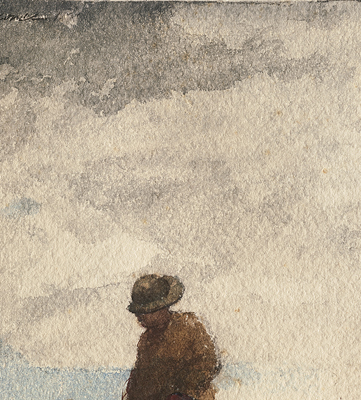Detail: Blotting
Blotting is perhaps the most basic subtractive technique a watercolor artist can use. A widely circulated English watercolor manual gave these instructions: “Should any…mass be too dark, water may be washed over them, the blotting paper applied, some bread crumbled over it, and then gently rubbed with the fingers…This will remove the superabundant tone softly and give granulation” (Penley 1874, p. 18). Applying water softens a wash, while blotting paper absorbs color from the high points of the textured paper, leaving it in the lower interstices. Soft breadcrumbs absorb excess color when rubbed over a damp area, leaving a texture called “granulation,” which lends liveliness to a picture and suggests a variety of atmospheric conditions. In Tynemouth Priory, England, Homer blotted the wash in the sky at upper-right in order to lighten the dark blue-gray color and produce effects suggesting clouds, wind, and weather.
Detail of Tynemouth Priory, England, showing where Homer blotted extensively to create a texture evoking particular atmospheric conditions.

